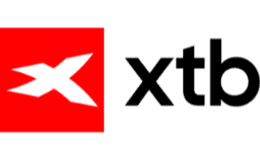
Fractional shares
Get dividend payments
HealthEquity Inc (HQY) is a publicly traded health information services business based in the US which employs around 3,150 staff. HealthEquity is listed on the NASDAQ and traded in US dollars. Its current price of $95.09 is 20.7% up on its price a month ago ($78.80).



Both exchange rates and share prices fluctuate in real time, so the costs estimated here should be considered as a guide only. They don't factor in spreads, which can be hard to pin down. Always refer to the platform itself for availability and pricing.
Quantity of shares
| Platform | Finder Score | Account fee | Min. initial deposit | Trade cost | Link |
|---|---|---|---|---|---|
9
Excellent
|
£0 | $100 | £913.16 |
Go to siteCapital at risk
|
|
9.1
Excellent
|
£0 | £1 | £915.33 |
Go to siteCapital at risk
|
|
10
Excellent
|
£0 | £1 | £907.72 |
Go to siteCapital at risk
|
|
9
Excellent
|
£0 | £0 | £910.89 |
Go to siteCapital at risk
|
|
9
Excellent
|
£0 | £0 | £910.89 |
Go to siteCapital at risk
|
|
8.5
Great
|
£0 (0.45% for funds) | £1 | £927.37 |
Go to siteCapital at risk
|
|
9.3
Excellent
|
0% - 0.25% | £100 | N/A |
Go to siteCapital at risk
|
Full comparison of share dealing platforms
All investing should be regarded as longer term. The value of your investments can go up and down, and you may get back less than you invest. Past performance is no guarantee of future results. If you’re not sure which investments are right for you, please seek out a financial adviser. Capital at risk.
Buying shares in just one company is generally considered a riskier bet than investing in a range of investments - AKA a "diversified portfolio". Experts generally recommend holding a mix of investments in specific assets and funds. Funds are ready-made portfolios of multiple companies' shares (potentially including HealthEquity), and the idea is that drops in the value of one constituent company's share price might be offset by rises in others.
HealthEquity is a major part of the NASDAQ, so it's included in many global funds and investment trusts, as well as tracker-style exchange traded funds (ETFs).
Review technicals and fundamentals to help you determine if now's a good time for you to invest.
View HealthEquity's price performance, share price volatility, historical data and technicals.
Historical closes compared with the last close of $95.09
| 1 week (2024-12-17) | 8.06% |
|---|---|
| 1 month (2024-11-24) | 20.67% |
| 3 months (2024-09-24) | 17.42% |
| 6 months (2024-06-24) | 18.48% |
| 1 year (2023-12-24) | 31.85% |
| 2 years (2022-12-24) | 25.25% |
| 3 years (2021-12-24) | 40.09% |
| 5 years (2019-12-24) | 64.80% |
The gauge below shows real-time ratings that are based on 26 popular indicators such as moving averages, for specific time periods. It's not a recommendation but is simply technical analysis that can form part of your research.
Finder might not agree with the analysis and we take no responsibility. We also give no representations or warranty on the accuracy or completeness of the information provided on this page.
All investing should be regarded as longer term. The value of your investments can go up and down, and you may get back less than you invest. Past performance is no guarantee of future results. If you’re not sure which investments are right for you, please seek out a financial adviser. Capital at risk.
All investing should be regarded as longer term. The value of your investments can go up and down, and you may get back less than you invest. Past performance is no guarantee of future results. If you’re not sure which investments are right for you, please seek out a financial adviser. Capital at risk.
Find out how to spot some of the best day trading stocks available in the UK and abroad, along with tips for managing your investment portfolio on a day-to-day basis.
We’ve tested, analysed and scored trading platforms to find the 10 best trading platforms in the UK, who they’re best for and the pros and cons.
Find out what Web3 is all about, including pros and cons of Web3 and how you can invest.
Some trading apps and platforms now offer competitive interest rates on uninvested cash.
We’ve tested, analysed and scored trading apps to find the 10 best trading apps in the UK, who they’re best for and the pros and cons.
We have listed the top forex trading platforms in the UK, who they’re best for and the pros and cons.
We’ve reviewed the best online trading platforms in the UK and explained why they’re best suited to beginners, with pros and cons.
A junior stocks and shares ISA account (JISA) is a tax-efficient way to save for your child’s future, here are the best options and how to compare.
We’ve reviewed the best stocks and shares ISA accounts in the UK, explaining who they might suit and what the benefits and drawbacks are.
Find out how to choose the best shares to buy now, see our list of the top 30 trending stocks today, and find out why they’re trending.